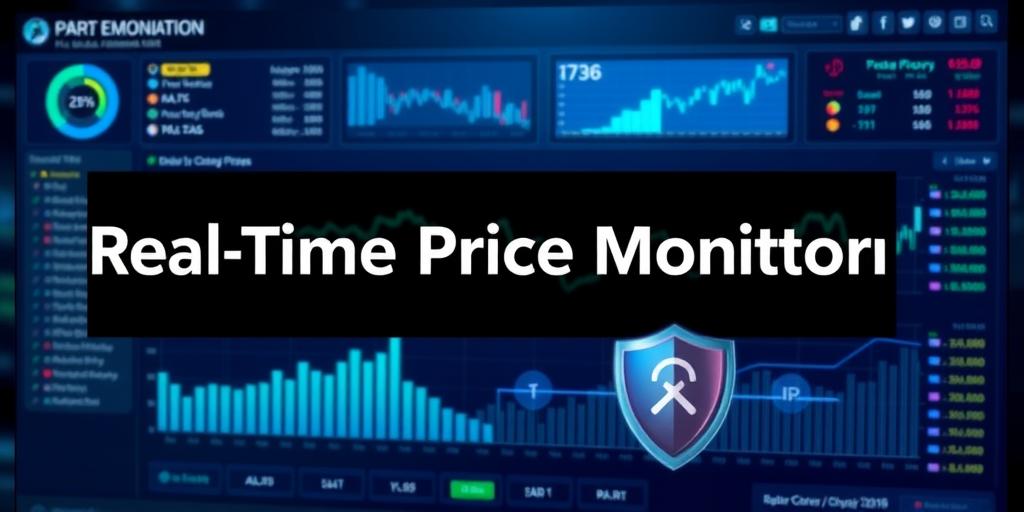In today's competitive e-commerce landscape, staying ahead requires access to timely and accurate pricing data. Real-time price monitoring allows businesses to track competitor pricing, identify market trends, and adjust their own strategies accordingly. However, gathering this data can be challenging due to restrictions imposed by e-commerce sites. This is where proxies come into play, enabling e-commerce aggregation without triggering blocks or cloaking.
The Importance of Real-Time Price Monitoring
Real-time price monitoring is crucial for several reasons:
- Competitive Advantage: Knowing competitor prices in real-time allows you to adjust your pricing strategies dynamically, ensuring you remain competitive.
- Market Trend Identification: Monitoring price changes can help identify emerging market trends, enabling you to adapt your product offerings and promotions.
- Profit Margin Optimization: By understanding the price elasticity of your products, you can optimize your profit margins while maintaining sales volume.
- Inventory Management: Monitoring price fluctuations can help you anticipate demand changes, allowing you to manage your inventory more effectively.
Challenges in E-commerce Aggregation
E-commerce sites often implement measures to prevent web scraping and price aggregation, including:
- IP Blocking: Detecting and blocking IP addresses that make frequent requests.
- CAPTCHAs: Requiring users to solve CAPTCHAs to prove they are not bots.
- Rate Limiting: Limiting the number of requests that can be made from a single IP address within a specific time frame.
- Honeypots: Deploying hidden links or pages that, when accessed, identify and block scraping bots.
These measures can make it difficult to gather the data needed for effective price monitoring.
How Proxies Enable E-commerce Aggregation
Proxies act as intermediaries between your scraping tool and the target e-commerce site, masking your IP address and allowing you to bypass restrictions. Here's how they work:
- IP Rotation: Rotating through a pool of different IP addresses to avoid triggering IP-based blocking mechanisms.
- Geo-Targeting: Accessing e-commerce sites from different geographic locations to gather pricing data specific to those regions.
- Bypassing CAPTCHAs: Using proxy services that automatically solve CAPTCHAs or provide access to CAPTCHA-solving services.
- Mimicking Human Behavior: Configuring scraping tools to mimic human browsing patterns, reducing the likelihood of detection.
Types of Proxies for E-commerce Aggregation
Different types of proxies offer varying levels of performance and anonymity. Here are some common options:
- Datacenter Proxies: These proxies are hosted in data centers and offer high speeds and reliability. However, they are more likely to be detected due to their non-residential IP addresses.
- Residential Proxies: These proxies use IP addresses assigned to real residential users, making them more difficult to detect. They offer higher anonymity but may be slower than datacenter proxies.
- Mobile Proxies: These proxies use IP addresses assigned to mobile devices, providing the highest level of anonymity. They are the most difficult to detect but can be more expensive.
Best Practices for Using Proxies in Price Monitoring
To maximize the effectiveness of proxies in e-commerce aggregation, follow these best practices:
- Choose the Right Proxy Type: Select the proxy type that best suits your needs, considering factors like speed, anonymity, and cost.
- Rotate Proxies Regularly: Rotate through your proxy pool frequently to avoid detection and IP blocking.
- Implement Retry Logic: Implement retry logic in your scraping tool to handle failed requests and ensure data completeness.
- Respect Robots.txt: Adhere to the rules outlined in the target site's robots.txt file to avoid legal issues and maintain ethical scraping practices.
- Monitor Proxy Performance: Monitor the performance of your proxies to identify and replace any that are underperforming or blocked.
Conclusion
Real-time price monitoring is essential for staying competitive in the dynamic e-commerce market. By leveraging proxies effectively, businesses can overcome the challenges of data aggregation and gain access to the timely and accurate pricing information they need to make informed decisions. Choosing the right proxy type, following best practices, and staying informed about anti-scraping techniques will ensure successful and ethical e-commerce aggregation.









